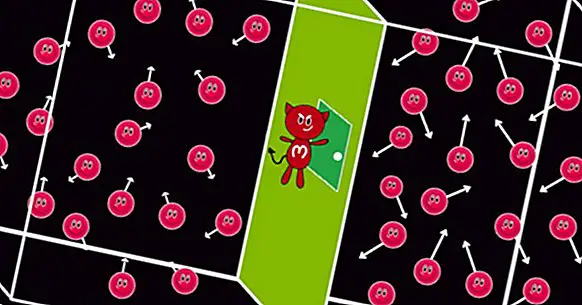What is the Demon of Laplace?
The search for certainty and the illusion of knowing what will happen tomorrow is something that has accompanied philosophical reflections and scientific practices over time.
If we could have the certainty that tomorrow will rain, or a war will break out, the decisions we would make today would surely be very different from those we would choose without knowing the future. The Demon of Laplace is a character that represents all this very well , Where does it come from?
The Demon of Laplace and the problem of prediction
The illusion of predicting and controlling what surrounds us is a subject that can be found in a good part of scientific development. For example, classical mechanics was based on the idea that everything that exists in the universe and nature, can be known through mathematical logical reasoning, as well as through a geometric system to measure and predict what will happen.
In other words, the mechanical class starts from considering that the universe and nature are governed by a series of initial laws that can be unveiled by humans for modification.
For example, modern astronomy in the West, inaugurated by Newton, has this background as its antecedent.
Who was Pierre Laplace?
Pierre Laplace was a French astronomer, physicist and mathematician who lived from 1749 to 1826 . He is credited with the development of celestial mechanics, worked hand in hand with Isaac Newton and Galileo in the prediction of eclipses and in the discovery of new planets. He also participated in the study of some molecules of gas and atomic particles.
What Laplace suggested from his knowledge is that, through science, we can predict and guess the activity of all behavioral systems that exist. And if not, the unpredictability would be only an error of knowledge that as such, can be corrected.
In the deterministic conception of Laplace everything can be predicted , and if not, it is because the knowledge produced by the human being has failed or is not enough.
What this means is that everything that exists in the universe is structured in a previous and independent way to the activity of human beings, with which our own actions and everything we are would be predetermined by the laws of the universe.
The deterministic demon (of Laplace)
The Laplace Demon is an imaginary character who has the faculty to know the initial properties of all the particles of nature and the universe, with such precision, that he can apply the natural laws to guess what will happen instantly or, much later weather; from a precise movement to a work of art (Calabrese, 1999).
It is in other words, the Devil of Laplace is a deterministic and almighty demon , a being that is outside the universe and that has predicted and decided everything that will happen in nature, including, of course, the activity of human beings.
The logic of prediction was not only transcendental in astronomy, the sciences of physics, mathematics and natural sciences, but it has also extended to the study of human behavior as well as to its intervention.
For example, it has been present in the development of modern medicine, and we could even see how the traditional way of doing human sciences, as well as economic and financial activity, impacted. However, from the development of new scientific paradigms, the Laplace Demon has encountered some limits.
From determinism to indeterminism: the end of certainty
The logic of prediction had a special success while understanding the universe in terms of linear systems, based on a stable cause-effect relationship. But when the theory of chaos and quantum mechanics came to challenge the linearity of all systems, the scientific field also questioned the insistence of applying the logic of prediction in everything we know.
Very broadly, among other things, there was a paradigm shift based on the consideration that in non-linear systems (which are complex systems, of chaotic and non-cyclical behaviors, as in human beings), the initial state is not Equal to the final state nor determines it, with which, they are systems that can not be predicted.
In the field of science, the universe and nature in general cease to be conceived as a set of laws of general coverage, pre-established by an outside being . This is how from the beginning of the twentieth century, there is an important shift where it is considered that, although it is possible to calculate probabilities, there can always be prediction failures.From this, some authors consider that an era marked by the end of certainty is inaugurated, especially in the human and social sciences.
Bibliographic references:
- Trainini, J. (2003). Towards the need for a new medical paradigm. Revista Argentina de Cardiología, 71 (6): 439-445.
- Calabrese, J. L. (1999). Expanding the borders of reductionism. Deduction and non-linear systems. Psychoanalysis APdeBA, XXI (3): 431-453.
- Wallerstein, IM (1999). The social sciences and the humanities on the threshold of the 21st century. The end of certainty in the social sciences. UNAM: Mexico.



















